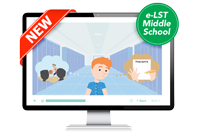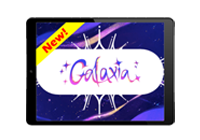LST Overview
Botvin LifeSkills Training (LST) is a research-validated substance abuse prevention program proven to reduce the risks of alcohol, tobacco, drug abuse, and violence by targeting the major social and psychological factors that promote the initiation of substance use and other risky behaviors. This comprehensive and exciting program provides adolescents and young teens with the confidence and skills necessary to successfully handle challenging situations.
Developed by Dr. Gilbert J. Botvin, a leading prevention expert, Botvin LifeSkills Training is backed by over 30 scientific studies and is recognized as a Model or Exemplary program by an array of government agencies including the U.S. Department of Education and the Center for Substance Abuse Prevention.
Rather than merely teaching information about the dangers of drug abuse, Botvin LifeSkills Training promotes healthy alternatives to risky behavior through activities designed to:
Teach students the necessary skills to resist social (peer) pressures to smoke, drink, and use drugs
Help students to develop greater self-esteem and self-confidence
Enable students to effectively cope with anxiety
Increase their knowledge of the immediate consequences of substance abuse
Enhance cognitive and behavioral competency to reduce and prevent a variety of health risk behaviors
Program Components
The Botvin LifeSkills Training program consists of three major components that cover the critical domains found to promote drug use. Research has shown that students who develop skills in these three domains are far less likely to engage in a wide range of high-risk behaviors. The three components are:
Drug Resistance Skills
Enables young people to recognize and challenge common misconceptions about tobacco, alcohol and other drug use. Through coaching and practice, they learn information and practical ATOD (Alcohol, Tobacco, and Other Drug use) resistance skills for dealing with peers and media pressure to engage in ATOD use.
Personal Self-Management Skills
Students learn how to examine their self-image and its effects on behavior; set goals and keep track of personal progress; identify everyday decisions and how they may be influenced by others; analyze problem situations, and consider the consequences of each alternative solution before making decisions; reduce stress and anxiety, and look at personal challenges in a positive light.
General Social Skills
Students develop the necessary skills to overcome shyness, communicate effectively and avoid misunderstandings, initiate and carry out conversations, handle social requests, utilize both verbal and nonverbal assertiveness skills to make or refuse requests, and recognize that they have choices other than aggression or passivity when faced with tough situations.
Participants
Botvin LifeSkills Training is designed for:
• Elementary school students
• Middle/junior high school students
• High school students
It has been evaluated and proven to be effective with:
• White middle-class students
• Ethnic minority students (primarily African-American and Hispanic)
• Inner-city urban populations
• Suburban populations
• Rural populations
Implementation
Settings
For optimal program implementation Botvin LifeSkills Training should be implemented in a classroom setting that is conducive to learning. The curriculum can be taught in school, community, faith-based, summer school and after-school settings.
Botvin LifeSkills Training can be implemented in any subject area and can be taught across multiple subjects.
Teaching Strategies
Botvin LifeSkills Training is designed to use developmentally appropriate and collaborative learning strategies taught through lecture, discussion, coaching, and practice to enhance students’ self-esteem, self-confidence, ability to make decisions, and ability to resist peer and media pressure.
Classroom Set-Up
The unique design of the Botvin LifeSkills Training program allows for flexibility to meet the needs of various classroom settings.
Curriculum sets include a comprehensive teacher’s manual and 30 student guides. Additional class materials can be purchased separately.
















